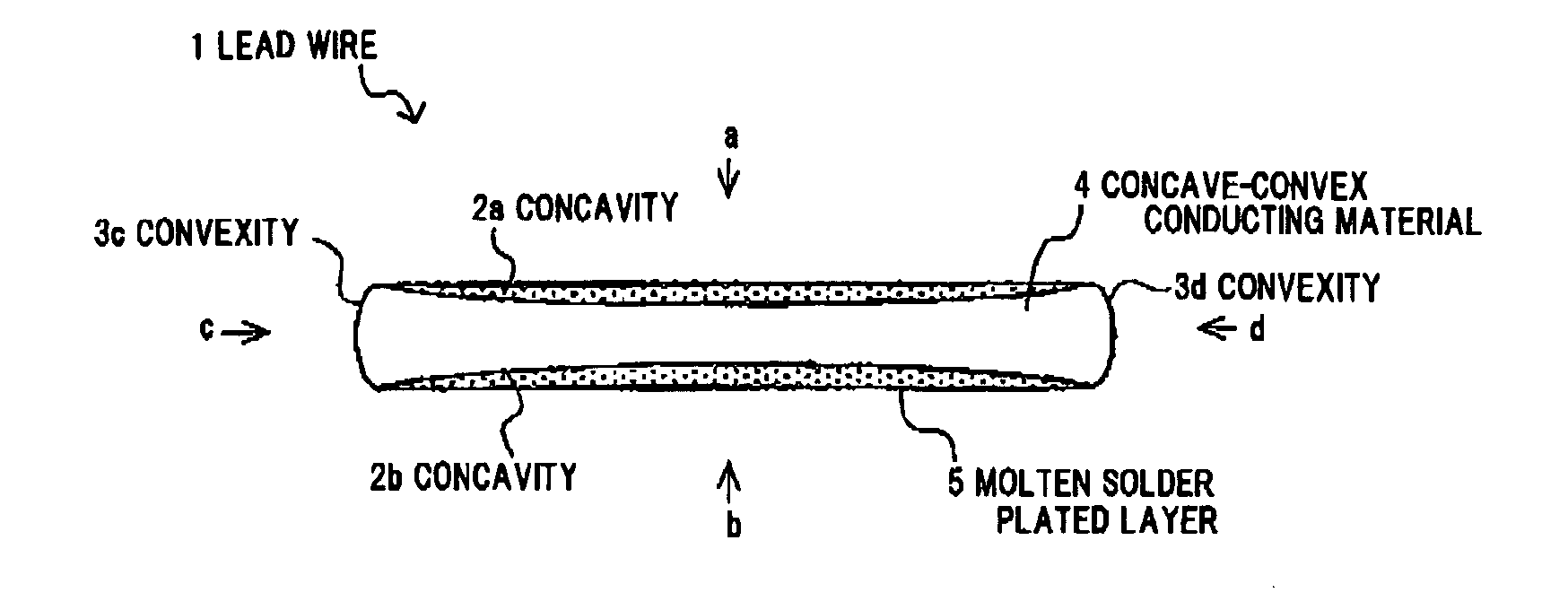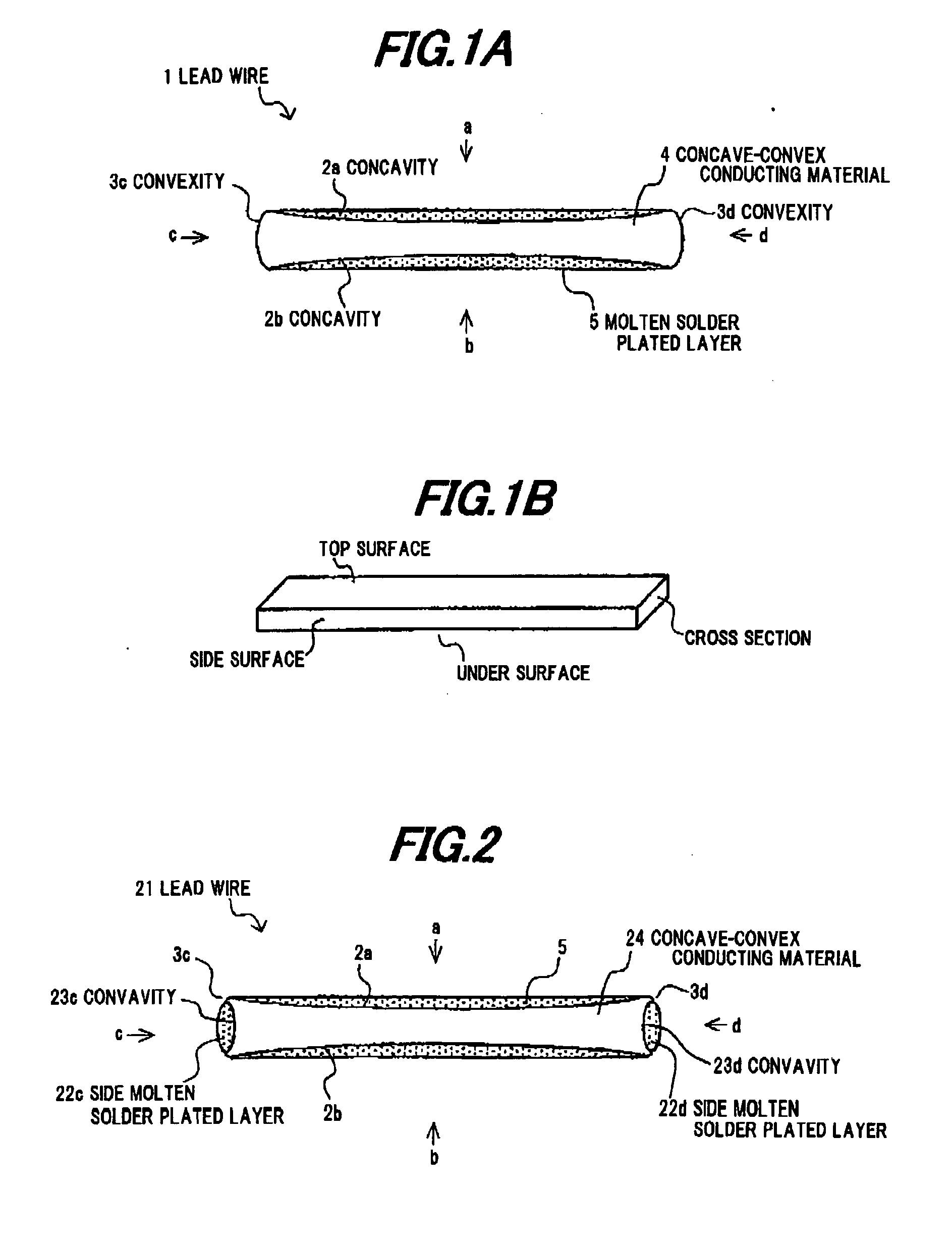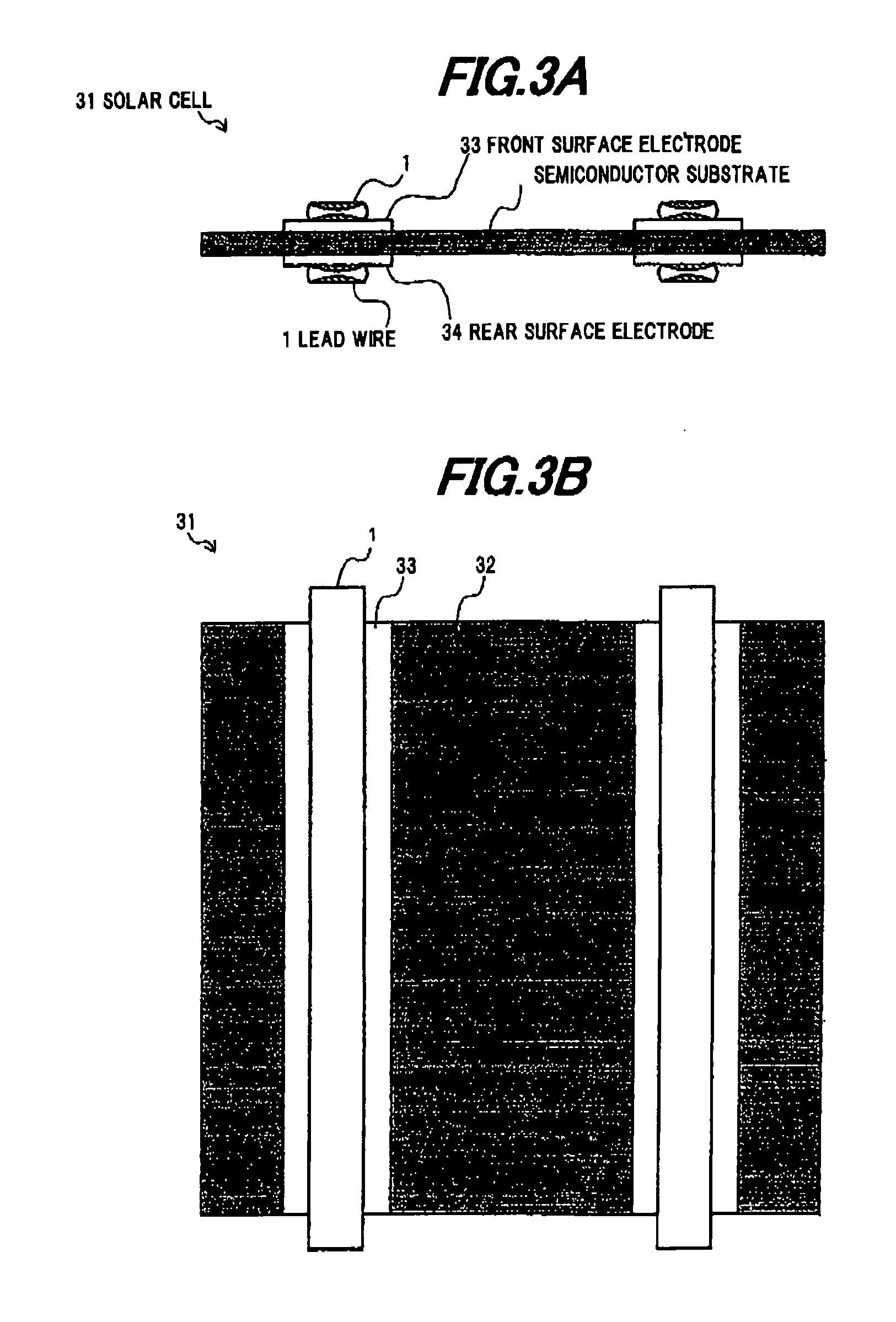Solar cell lead wire, method of making the same, and solar cell
a solar cell and lead wire technology, applied in the field of solar cell lead wire, can solve the problems of difficult adjustment of the pressure applied to the strip-shaped conducting material, inferior section size accuracy of the concave conducting material, and inferior mass productivity of the process, so as to prevent the cell from cracking
- Summary
- Abstract
- Description
- Claims
- Application Information
AI Technical Summary
Benefits of technology
Problems solved by technology
Method used
Image
Examples
example 1
[0102]A strip-shaped conducting material which has a rectangular wire-like shape of 2.0 mm in width and 0.16 mm in thickness was formed by applying a roll processing to a Cu material as a raw conducting material. A concave-convex conducting material 4 having concavities 2a, 2b was formed by applying a drawing or extruding die processing to the strip-shaped conducting material. The concave-convex conducting material 4 was heat-treated by using a batch heating equipment; and molten solder plated layers were formed on the concavities 2a, 2b of the concave-convex conducting material 4 so as to have flat surfaces by coating with solder plating of Sn-3% Ag-0.5Cu around the strip-shaped conducting material 4 (the heat-treated Cu was used as the conducting body). From the above, the solar cell lead wire 1 shown in FIG. 1 was obtained.
example 2
[0103]In addition to the composition of the solar cell lead wire 1 of Example 1, the side molten solder plated layers 22c, 22d were formed on the convexities 3c, 3d on the side surfaces c, d, and the solar cell lead wire 21 shown in FIG. 2 was obtained.
example 3
[0104]A strip-shaped conducting material which has a rectangular wire-like shape of 2.0 mm in width and 0.16 mm in thickness was formed by applying a slit processing to a Cu-invar-Cu material (ratio of 2:1:2) as a raw conducting material. A concave-convex conducting material 4 having concavities 2a, 2b was formed by applying a drawing or extruding die processing to the strip-shaped conducting material. Molten solder plated layers were formed on the concavities 2a, 2b of the concave-convex conducting material 4 so as to have flat surfaces by coating with solder plating around the strip-shaped conducting material 4. From the above, the solar cell lead wire 1 shown in FIG. 1 was obtained.
PUM
| Property | Measurement | Unit |
|---|---|---|
| thickness | aaaaa | aaaaa |
| width | aaaaa | aaaaa |
| width | aaaaa | aaaaa |
Abstract
Description
Claims
Application Information
 Login to View More
Login to View More - R&D
- Intellectual Property
- Life Sciences
- Materials
- Tech Scout
- Unparalleled Data Quality
- Higher Quality Content
- 60% Fewer Hallucinations
Browse by: Latest US Patents, China's latest patents, Technical Efficacy Thesaurus, Application Domain, Technology Topic, Popular Technical Reports.
© 2025 PatSnap. All rights reserved.Legal|Privacy policy|Modern Slavery Act Transparency Statement|Sitemap|About US| Contact US: help@patsnap.com



